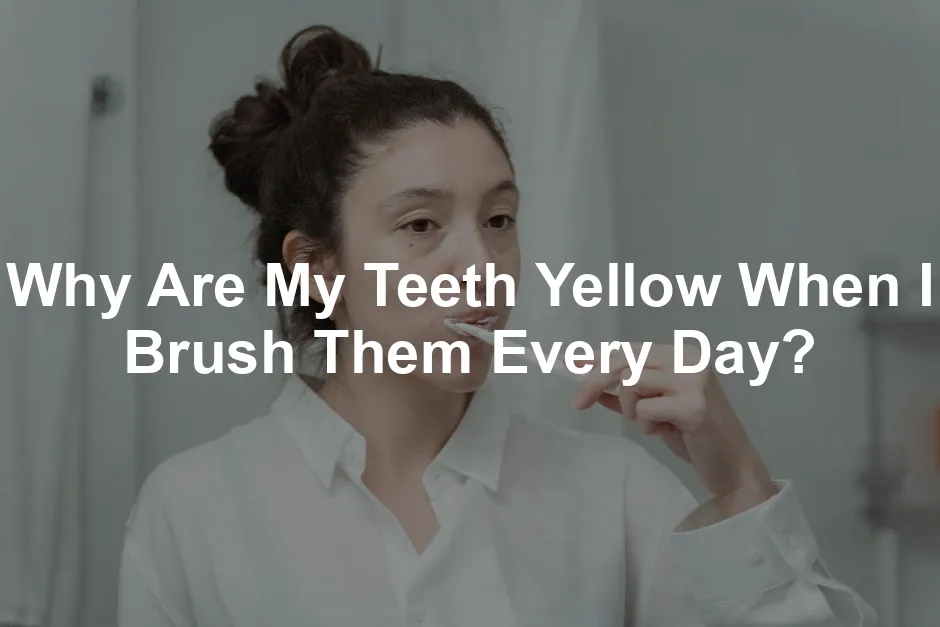
Why Are My Teeth Yellow When I Brush Them Every Day?
Introduction
Have you ever felt frustrated by yellow teeth, even after brushing daily? You’re not alone! Many people share this concern. Understanding why teeth become discolored is crucial for finding effective solutions. In this article, we’ll look at the reasons behind yellow teeth and explore practical ways to brighten your smile.
Summary and Overview
Yellow teeth are a common issue that can shake your confidence. It’s disheartening when you care for your oral hygiene yet don’t see results. Factors like diet, lifestyle choices, and genetics play significant roles in tooth discoloration. While brushing is important, it might not be enough to achieve a dazzling smile.
We will discuss the common causes of yellow teeth, including the impact of food and drinks, smoking, and medications. Additionally, we’ll provide insights on effective treatments and preventive measures. By the end, you’ll have a clearer understanding of how to tackle this issue and regain your smile.
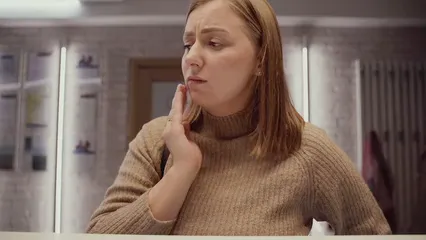
Understanding Tooth Color and Discoloration
What Makes Teeth Yellow?
Have you ever wondered why your teeth look yellow, despite regular brushing? The answer lies in understanding tooth stains. There are two primary types: intrinsic and extrinsic stains.
Intrinsic stains develop within the tooth. They result from factors like aging, trauma, or certain medications. As we grow older, our tooth enamel thins. This exposes the underlying dentin, which is naturally yellow. On the other hand, extrinsic stains occur on the tooth’s surface. These stains typically come from food, drinks, and habits like smoking.
Tooth color is also influenced by genetics. Some people naturally have thicker enamel, which can mask the dentin. Conversely, those with thinner enamel may notice more yellowing. Research shows that about 68% of adults experience some form of tooth discoloration.
Reflect on your dental habits. Are you doing everything possible to protect your smile? If not, investing in a quality Crest 3D White Brilliance Toothpaste could be your new best friend. This toothpaste not only fights stains but also strengthens enamel, making it a must-have for a bright smile!

Common Causes of Yellow Teeth
Poor Oral Hygiene Practices
Even with daily brushing, yellow teeth can indicate poor oral hygiene. Inadequate brushing and flossing can lead to plaque buildup. Plaque traps stains and bacteria, causing discoloration.
Proper brushing techniques are essential. Brush for at least two minutes, using gentle circular motions. Don’t forget to brush your tongue, too, as bacteria can linger there. Flossing daily is crucial for removing plaque between teeth.
Studies show that poor oral hygiene can lead to yellowing and gum disease. It’s essential to maintain a comprehensive oral care routine. Consider scheduling a dental check-up to ensure your practices are effective. Regular visits can help prevent yellowing and keep your smile bright. You might also want to try Philips Sonicare ProtectiveClean 6100 Rechargeable Electric Toothbrush. This toothbrush offers superior plaque removal and gentle gum care, making it a smart investment for your oral health!
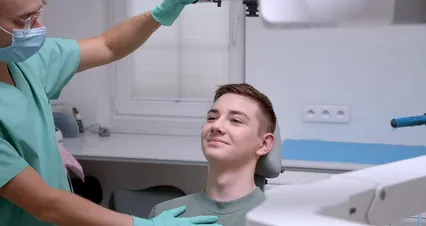
Dietary Impacts on Tooth Color
Have you noticed your teeth turning yellow despite your best brushing efforts? Your diet might be the culprit. Certain foods and drinks are notorious for staining teeth. Coffee, red wine, and tea contain chromogens—color pigments that cling to enamel. Even berries, sauces, and acidic drinks can contribute to discoloration.
Tannins, commonly found in tea and wine, have a staining effect too. These compounds can embed in your enamel, making it crucial to rinse your mouth after consuming them. A study found that 60% of individuals experience tooth discoloration linked to their dietary habits. Want to keep your drink choices in check? Consider investing in a Reusable Water Bottle. Staying hydrated with water can help rinse away some of those staining agents!
To combat this issue, consider keeping a food diary. Tracking what you eat can help you identify stain-causing culprits. With awareness, you can make better choices for a brighter smile.
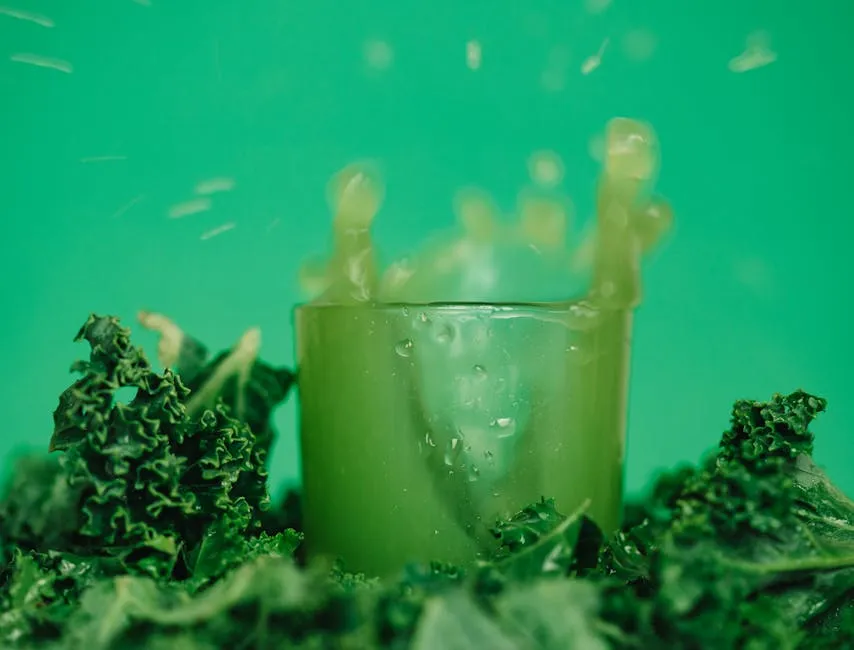
Smoking and Tobacco Use
Do you smoke or use tobacco products? If so, your teeth may be suffering. Tobacco is a leading cause of yellowing due to tar and nicotine. These substances stick to the enamel, creating stubborn stains over time.
Research indicates that 90% of smokers notice tooth discoloration, which worsens with prolonged use. Beyond yellow teeth, smoking poses serious health risks, including oral cancer.
Quitting tobacco won’t instantly restore your teeth’s whiteness, but it prevents further staining. If you need help to quit, there are countless resources available. Taking this step can greatly improve your oral health and overall well-being. To help with that, consider using TheraBreath Fresh Breath Oral Rinse. It can help combat bad breath and boost your confidence while you work on quitting!
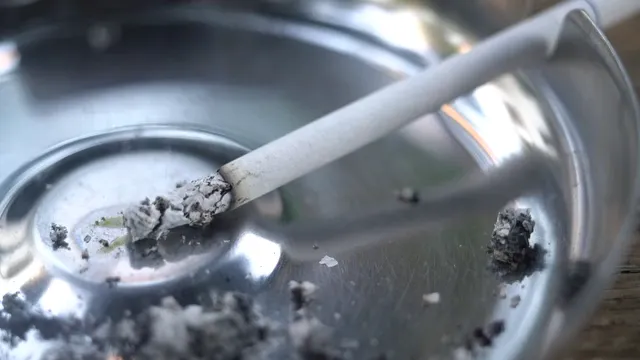
Medications and Discoloration
Did you know that some medications can lead to yellow teeth? It’s true! Certain prescription drugs, especially antibiotics, can cause discoloration. Tetracycline is a well-known example. It can affect enamel formation in young children, leading to intrinsic stains.
Other medications linked to tooth discoloration include antihistamines and some blood pressure medications. They can all contribute to a yellowish hue over time. If you notice your teeth changing color after starting a new medication, it’s wise to talk to your dentist.
Statistics show that up to 10% of adults experience tooth discoloration related to their medications. It’s important to consult your dentist if you suspect a link between your prescriptions and yellowing. Your dental professional can provide valuable insights and suggest alternatives that might be less likely to affect your smile. And while you’re at it, consider using a SmileDirectClub Teeth Whitening Kit for an extra boost!
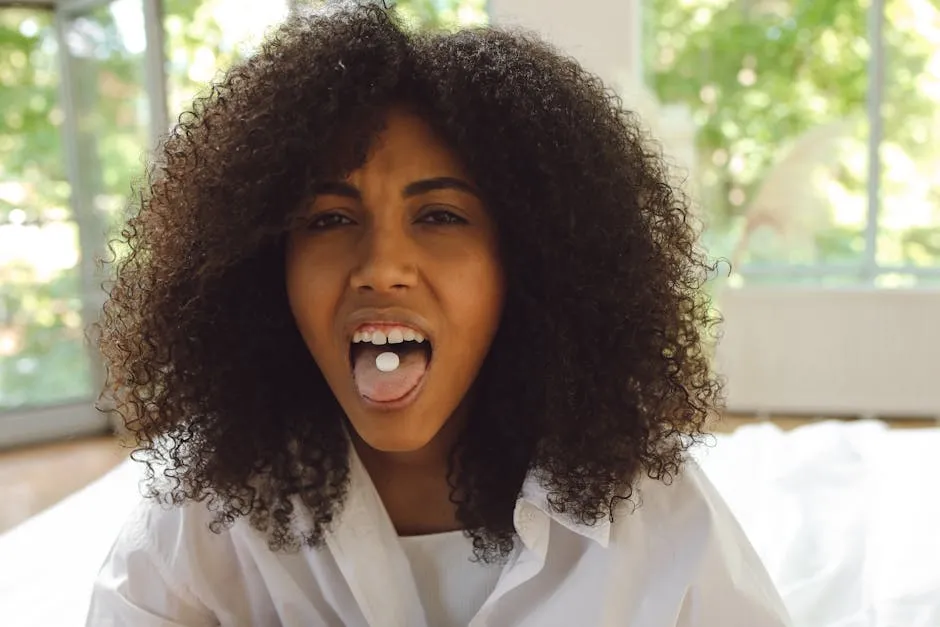
Treatment Options for Yellow Teeth
Professional Dental Treatments
If your teeth are yellow despite regular brushing, professional treatments may be the answer. Dental cleanings can effectively remove surface stains and tartar buildup. These cleanings are essential for keeping your smile bright and healthy.
In-office whitening treatments are another excellent option. They use stronger agents than at-home products, leading to more noticeable results. Studies show that professional whitening can lighten teeth by several shades in just one session.
Take-home whitening kits offer flexibility and can also be effective. These kits allow you to whiten your teeth at your own pace, but they may take longer to achieve the desired results. For a solid at-home option, consider the AuraGlow Teeth Whitening Kit. This kit is designed for easy use at home and can help you achieve a brighter smile without the hefty price tag of professional services!
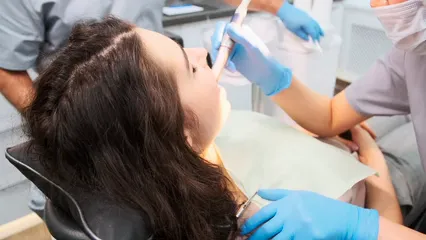
At-Home Remedies and Products
Struggling with yellow teeth despite daily brushing? You’re not alone! Many people turn to over-the-counter products for help. Whitening toothpaste is a popular choice. These toothpastes often contain mild abrasives and chemicals to help remove surface stains. Look for brands that specifically label themselves as whitening, like Colgate Optic White Teeth Whitening Toothpaste. It’s formulated to fight stains and brighten your smile all in one go!
Whitening strips are another effective option. These thin, flexible strips are coated with a whitening gel. Research shows that they can lighten teeth by several shades when used consistently. However, it’s crucial to follow the manufacturer’s instructions to avoid gum sensitivity. Give Crest 3D Whitestrips Professional Effects a try for a professional-level whitening experience at home!
DIY remedies are also common, but results vary. Baking soda and hydrogen peroxide can help, but overuse may damage enamel. A study found that 25% of users experienced improved whiteness with at-home products. Safety is key, so choose reputable brands and consult your dentist if unsure. For a safe and effective choice, consider using Activated Charcoal Teeth Whitening Powder. It’s a popular natural remedy for whitening that many swear by!
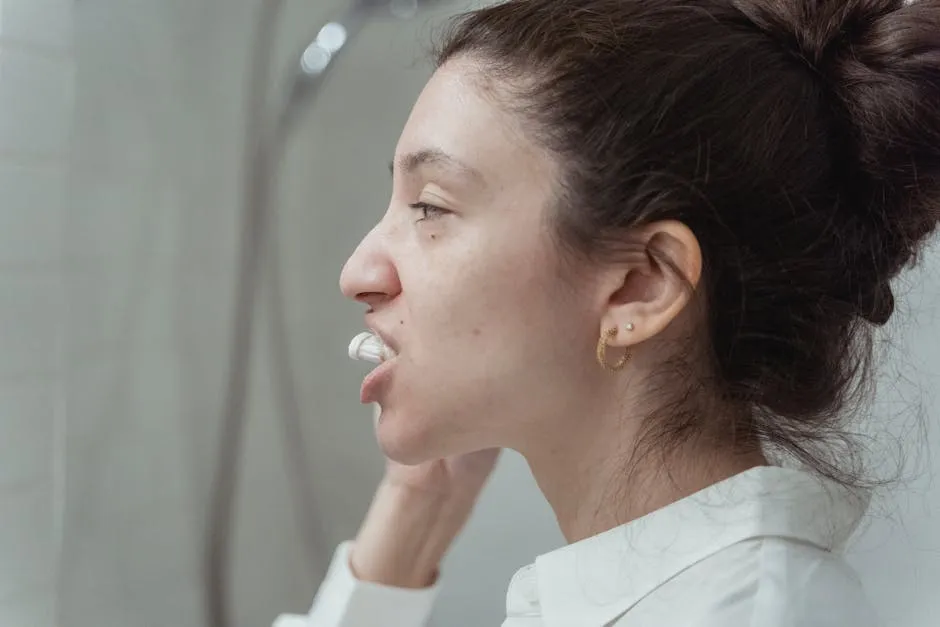
Please let us know what you think about our content by leaving a comment down below!
Thank you for reading till here 🙂
All images from Pexels




